
Paris, Rome, Florence: An Unforgettable 10-Day Itinerary to Europe's Most Iconic Destinations
 10 Day Tour of Rome, Florence and Paris
10 Day Tour of Rome, Florence and Paris
Overview
Trip Map
Itinerary
Inclusions
Reviews







10 Days 9 Nights
Best Time: Jan-Dec
Cultural Exploration
History Buffs
Cover the best of Rome, Florence, and Paris on a meticulously planned 10-day itinerary. Each city is an open-air museum filled with architectural treasures. You'll enjoy a private guided tour in all three, revealing hidden gems and local secrets. Imagine the stories that await you in the ancient ruins of Rome, the Renaissance splendor of Florence, and the timeless elegance of Paris. With travel guidance provided at every step by the Go Real Travel mobile app, your adventure will be as enriching as it is hassle-free, allowing you to fully experience these incredible cities in only 10 days.
- Witness the ancient Colosseum and stroll through the Piazza Navona in Rome
- Be captivated by the divine artistry of Michelangelo in the Sistine Chapel in the Vatican City
- Walk amidst the Renaissance masterpieces in Florence's Piazza della Signoria
- Gaze up at the Eiffel Tower, a soaring symbol of Parisian elegance and a marvel of engineering
- Relax in the beautiful Tuileries Garden and stare in awe at the restored Cathedral of Notre Dame
Cover the best of Rome, Florence, and Paris on a meticulously planned 10-day itinerary. Each city is an open-air museum filled with architectural treasures. You'll enjoy a private guided tour in all three, revealing hidden gems and local secrets. Imagine the stories that await you in the ancient ruins of Rome, the Renaissance splendor of Florence, and the timeless elegance of Paris. With travel guidance provided at every step by the Go Real Travel mobile app, your adventure will be as enriching as it is hassle-free, allowing you to fully experience these incredible cities in only 10 days.
- Witness the ancient Colosseum and stroll through the Piazza Navona in Rome
- Be captivated by the divine artistry of Michelangelo in the Sistine Chapel in the Vatican City
- Walk amidst the Renaissance masterpieces in Florence's Piazza della Signoria
- Gaze up at the Eiffel Tower, a soaring symbol of Parisian elegance and a marvel of engineering
- Relax in the beautiful Tuileries Garden and stare in awe at the restored Cathedral of Notre Dame

Colosseum
Historic Landmarks

Vatican City
Churches & Monasteries

Piazza del Duomo
Churches & Monasteries

Galleria dell'Accademia
Museums & Galleries

Eiffel Tower
Historic Landmarks

Louvre Museum
Museums & Galleries
Must see sights

Colosseum
Historic Landmarks

Vatican City
Churches & Monasteries

Piazza del Duomo
Churches & Monasteries

Galleria dell'Accademia
Museums & Galleries

Eiffel Tower
Historic Landmarks

Louvre Museum
Museums & Galleries
Starting from
$2645
per person
 Not included
Not included Secure Your Customizable Trip
Enter your details to embark on a journey that can be tailored just for you.
Start
Travelers
0 travelers
Add Room
Remove Room
Preferred Hotel Stars
Select Hotel Stars
Craft Your Own Itinerary
Select your interests and destinations for a trip plan inspired by you.
Europe's Iconic Destinations Trip - Map & Itinerary
Enable/Disable Map Scrolling
Click To Make Map Interactive

Europe's Iconic Destinations Trip Timeline
 Edit Details
Edit DetailsArrival
3 nights
Rome
Italy
Train: 2h
2 nights
Florence
Italy
Air: 1h45m
4 nights
Paris
France
Departure
Day-By-Day Itinerary of Europe's Iconic Destinations Trip

Day 1
Arrive Rome
Day 1
Arrive Rome



To Be Determined
Private Transfer to your Hotel
For your arrival in Rome, we will provide information on the customs and passport procedures. We will schedule a pick up for your flight's arrival time. You will be met at arrivals inside the terminal by a driver holding a sign with your name on it. The transfer is for your party only - you will not be sharing a vehicle. The cost of the ride will be included in your itinerary package and you will be taken directly to your hotel. IMPORTANT NOTE: Please be aware the car service can fit up to 1 checked item of luggage and 1 personal item per person, such as a purse or small backpack. If you think you will have more baggage, please inform your travel consultant as this may result in an additional fee.

Day 1
Arrive Rome


Day 1
Arrive Rome




To Be Determined:
Private Transfer to your Hotel
Mid-Day/Afternoon:
Colosseum
Late Afternoon/Early Evening:
Forum (Ancient Rome)


Day 2
Rome
Day 2
Rome




9:00 AM - 12:00 PM
Grand Tour of Historic Center, Guided
Get to know the historic core of Rome on this three hour private guided walking tour that takes in such famous sights as People's Square (Piazza Popolo), the Spanish Steps, Trevi Fountain where Anita Ekberg jumped into the water in Frederico Fellini's La Dolce Vita, the column of Marcus Aurelius, the Pantheon, and the most beautiful square in all of Italy - Piazza Navona.

Spanish Steps
Take a scenic walk up the 18th-century stairway where Audrey Hepburn and Gregory Peck set out on their Roman Holiday.
Show More

The Trevi Fountain
Admire one of the most iconic sights in Rome, made famous by Anita Ekberg in La Dolce Vita.
Show More

Pantheon
Visit this iconic former pagan temple converted into a Christian church.
Show More

Spanish Steps
Take a scenic walk up the 18th-century stairway where Audrey Hepburn and Gregory Peck set out on their Roman Holiday.
Show More

The Trevi Fountain
Admire one of the most iconic sights in Rome, made famous by Anita Ekberg in La Dolce Vita.
Show More

Pantheon
Visit this iconic former pagan temple converted into a Christian church.
Show More

Spanish Steps
Take a scenic walk up the 18th-century stairway where Audrey Hepburn and Gregory Peck set out on their Roman Holiday.
Show More
prev
next

Day 2
Rome


Spanish Steps
 Highlight of Grand Tour of Historic Center, Guided
Highlight of Grand Tour of Historic Center, GuidedTake a scenic walk up the 18th-century stairway where Audrey Hepburn and Gregory Peck set out on their Roman Holiday.
The majestically balustraded Spanish Steps were built in 1723-6 to connect the piazza with the church of the Trinita dei Monti and the Pincio. It quickly became a favorite spot of poets, artists, and writers who gathered on its 137 steps, and it's now a favorite stop for tourists from all over the world. Yet this highly attractive stairway still somehow manages to retain a sense of romance even at the height of the tourist season, and if you happen to get there at the beginning of May you’ll find it laden with tubs of magnificent azaleas. A masterpiece of 18th-century town planning, the steps actually contain a religious message – the three flights and three landings are an allusion to the Holy Trinity.
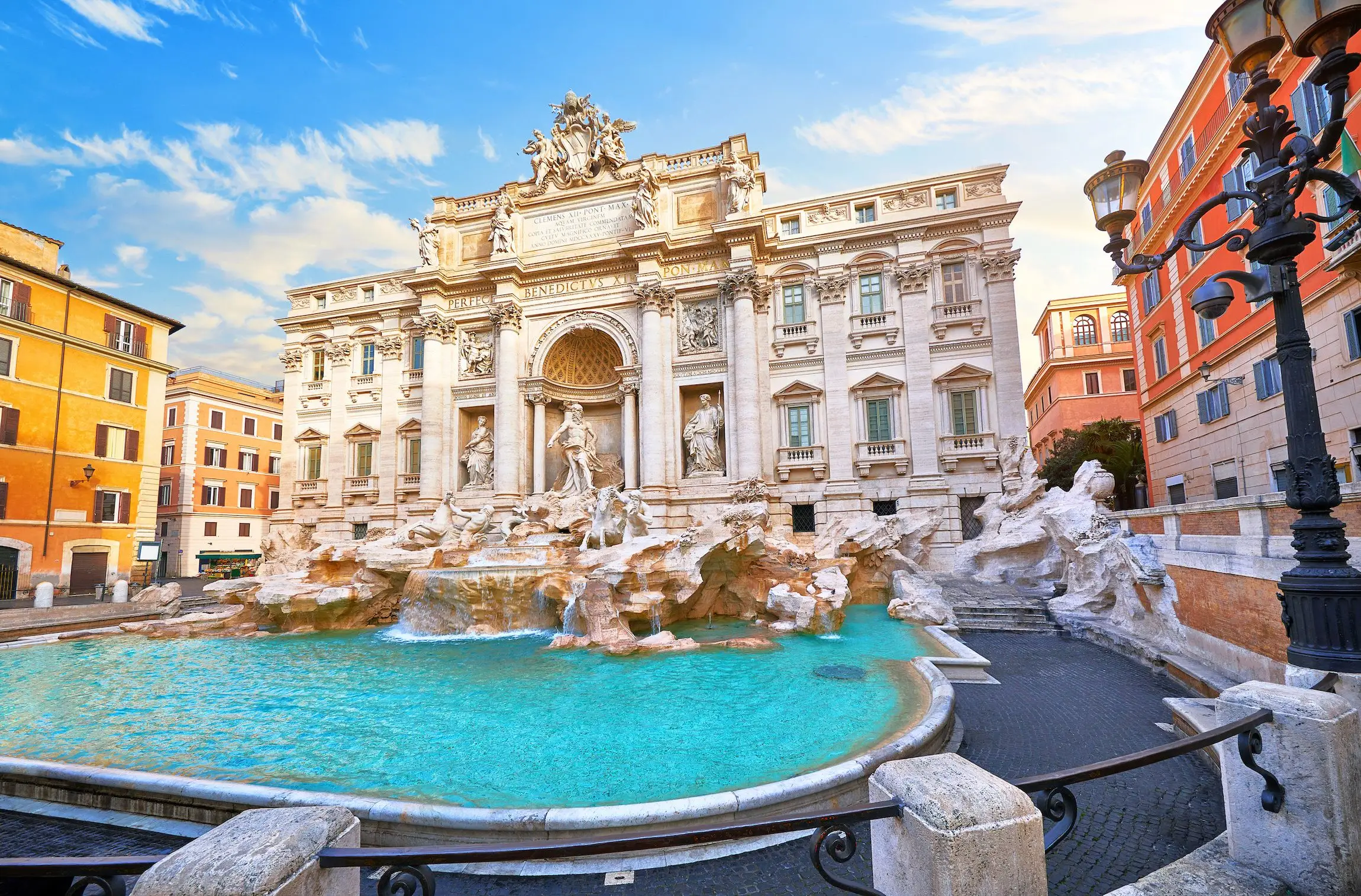
The Trevi Fountain
 Highlight of Grand Tour of Historic Center, Guided
Highlight of Grand Tour of Historic Center, GuidedAdmire one of the most iconic sights in Rome, made famous by Anita Ekberg in La Dolce Vita.
The Trevi Fountain is one of the most iconic sights in Rome thanks to the antics of the shapely Anita Ekberg casting herself into its waters in Frederico Fellini’s cinematic masterpiece, La Dolce Vita. The fountain curiously seems to appear out of virtually nowhere within a warren of backstreets but is nevertheless discovered reasonably early each day by endless crowds of tourists looking to ensure their future return to Rome by tossing a coin back over their should into its crystal clear water (the coins are raked up each morning and donated to the Church organization Caritas).
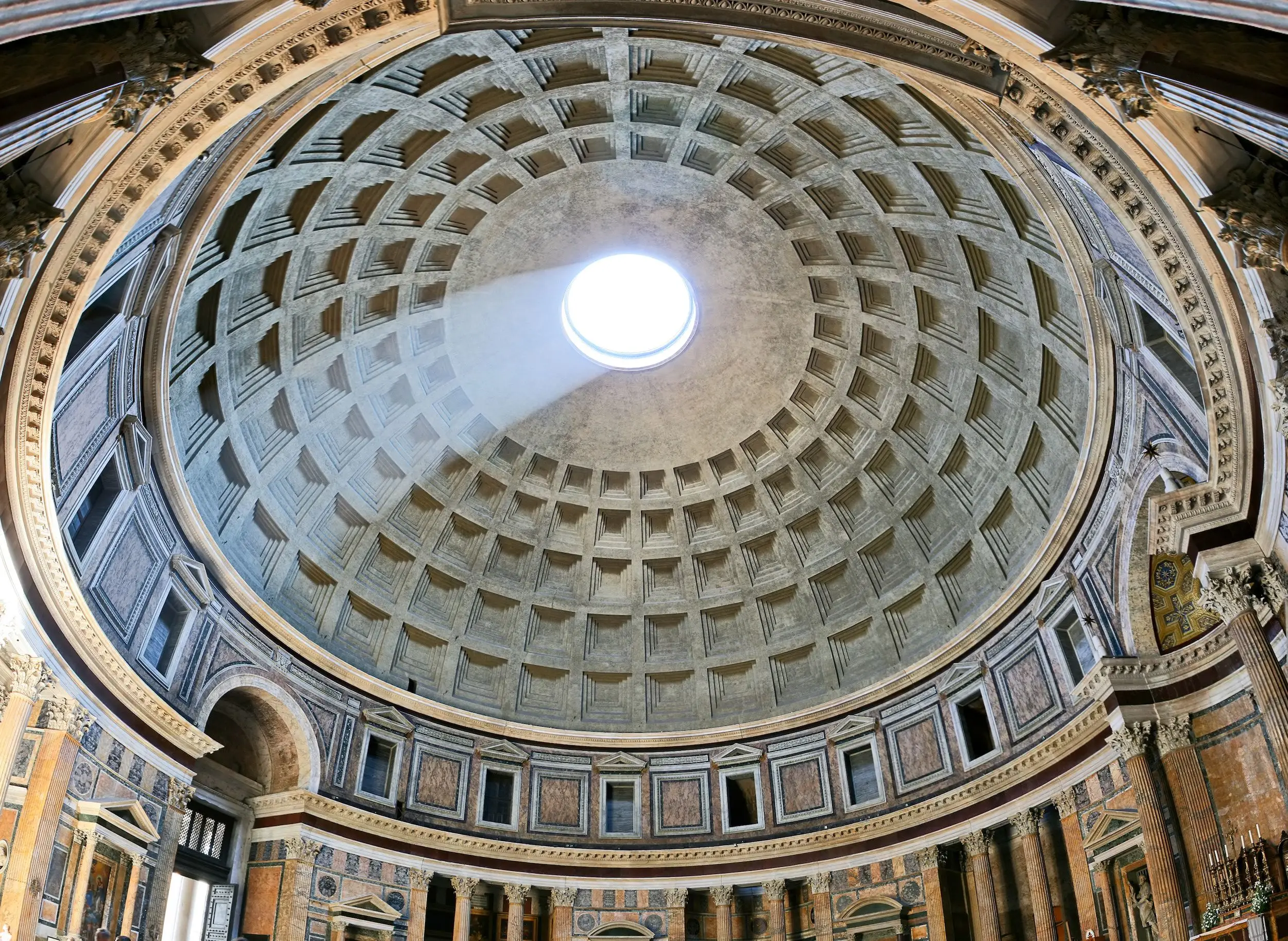
Pantheon
 Highlight of Grand Tour of Historic Center, Guided
Highlight of Grand Tour of Historic Center, GuidedVisit this iconic former pagan temple converted into a Christian church.
This sanctuary of impressive dimensions is one of the best-preserved buildings of ancient Rome. Erected on the foundations of an earlier temple dating back to 27 BC, its construction was ordered by the Emporer Hadrian in the second century AD. The Pantheon was originally a Pagan temple dedidated to all of the gods. The building's consecration as a church in 609 AD saved it from the abandonment, destruction, and the worst of the spoliation that befell the majority of ancient Rome's buildings during the early medieval period. Its greying exterior may look its age, but inside, a spectacular experience awaits. With light streaming through its oculus, the marble-clad interior seems vast. The Pantheon is home to some notable tombs, including those of painters Annibale Carracci and Raphael and King Vittorio Emanuele II.

Spanish Steps
 Highlight of Grand Tour of Historic Center, Guided
Highlight of Grand Tour of Historic Center, GuidedTake a scenic walk up the 18th-century stairway where Audrey Hepburn and Gregory Peck set out on their Roman Holiday.
The majestically balustraded Spanish Steps were built in 1723-6 to connect the piazza with the church of the Trinita dei Monti and the Pincio. It quickly became a favorite spot of poets, artists, and writers who gathered on its 137 steps, and it's now a favorite stop for tourists from all over the world. Yet this highly attractive stairway still somehow manages to retain a sense of romance even at the height of the tourist season, and if you happen to get there at the beginning of May you’ll find it laden with tubs of magnificent azaleas. A masterpiece of 18th-century town planning, the steps actually contain a religious message – the three flights and three landings are an allusion to the Holy Trinity.

The Trevi Fountain
 Highlight of Grand Tour of Historic Center, Guided
Highlight of Grand Tour of Historic Center, GuidedAdmire one of the most iconic sights in Rome, made famous by Anita Ekberg in La Dolce Vita.
The Trevi Fountain is one of the most iconic sights in Rome thanks to the antics of the shapely Anita Ekberg casting herself into its waters in Frederico Fellini’s cinematic masterpiece, La Dolce Vita. The fountain curiously seems to appear out of virtually nowhere within a warren of backstreets but is nevertheless discovered reasonably early each day by endless crowds of tourists looking to ensure their future return to Rome by tossing a coin back over their should into its crystal clear water (the coins are raked up each morning and donated to the Church organization Caritas).

Pantheon
 Highlight of Grand Tour of Historic Center, Guided
Highlight of Grand Tour of Historic Center, GuidedVisit this iconic former pagan temple converted into a Christian church.
This sanctuary of impressive dimensions is one of the best-preserved buildings of ancient Rome. Erected on the foundations of an earlier temple dating back to 27 BC, its construction was ordered by the Emporer Hadrian in the second century AD. The Pantheon was originally a Pagan temple dedidated to all of the gods. The building's consecration as a church in 609 AD saved it from the abandonment, destruction, and the worst of the spoliation that befell the majority of ancient Rome's buildings during the early medieval period. Its greying exterior may look its age, but inside, a spectacular experience awaits. With light streaming through its oculus, the marble-clad interior seems vast. The Pantheon is home to some notable tombs, including those of painters Annibale Carracci and Raphael and King Vittorio Emanuele II.

Spanish Steps
 Highlight of Grand Tour of Historic Center, Guided
Highlight of Grand Tour of Historic Center, GuidedTake a scenic walk up the 18th-century stairway where Audrey Hepburn and Gregory Peck set out on their Roman Holiday.
The majestically balustraded Spanish Steps were built in 1723-6 to connect the piazza with the church of the Trinita dei Monti and the Pincio. It quickly became a favorite spot of poets, artists, and writers who gathered on its 137 steps, and it's now a favorite stop for tourists from all over the world. Yet this highly attractive stairway still somehow manages to retain a sense of romance even at the height of the tourist season, and if you happen to get there at the beginning of May you’ll find it laden with tubs of magnificent azaleas. A masterpiece of 18th-century town planning, the steps actually contain a religious message – the three flights and three landings are an allusion to the Holy Trinity.
prev
next


Day 3
Rome
Day 3
Rome



Early Morning to Afternoon
Vatican City
Rome is unique in the world in that it contains an independent country within its city limits - the Vatican City, from where the Pope administers the Catholic Church. The symbolic center of Catholicism is St Peter's Basilica, the second-largest Catholic church in the world and among the most beautiful. The Vatican Museum contains one of the greatest collections of art in existence, including Michelangelo's jaw-dropping Sistine Chapel. The popes had a bigger influence on Rome than just the collection of art. The Pope's title is actually Bishop of Rome, and popes administed the city for centuries, shaping its architecture & public spaces. Rome was re-built to be an example of urban beauty, and the Vatican was meant to be the showcase within the showcase. Their success is evident from the throngs of visitors who flock here even today.

Vatican Museums
Book early if you want to see the Vatican Museum's monumental works of art from the greatest Italian artists of the Renaissance.
Show More

St Peter’s Basilica
Explore the gigantic and incredibly beautiful church known as "the greatest of all churches of Christendom".
Show More

Vatican Gardens
Escape the crowds in this oasis of green hidden behind the walls of the Vatican.
Show More

St Peter's Square
Stand in the middle of this famous square in which the faithful gather to hear the Pope give audiences and celebrate mass.
Show More

Sistine Chapel
Gaze up at the world's most famous ceiling, the masterpiece of Michelangelo.
Show More

Vatican Museums
Book early if you want to see the Vatican Museum's monumental works of art from the greatest Italian artists of the Renaissance.
Show More

St Peter’s Basilica
Explore the gigantic and incredibly beautiful church known as "the greatest of all churches of Christendom".
Show More

Vatican Gardens
Escape the crowds in this oasis of green hidden behind the walls of the Vatican.
Show More

St Peter's Square
Stand in the middle of this famous square in which the faithful gather to hear the Pope give audiences and celebrate mass.
Show More

Sistine Chapel
Gaze up at the world's most famous ceiling, the masterpiece of Michelangelo.
Show More

Vatican Museums
Book early if you want to see the Vatican Museum's monumental works of art from the greatest Italian artists of the Renaissance.
Show More
prev
next

Day 3
Rome


Vatican Museums
 Highlight of Vatican City
Highlight of Vatican CityBook early if you want to see the Vatican Museum's monumental works of art from the greatest Italian artists of the Renaissance.
The Vatican Museum is actually 26 different museums, which include not only exhibitions but chapels, apartments, and other rooms of the Vatican palace, covering a huge range of fine and applied arts patronized by the popes. There's also an outstanding collection of ancient antiquities (including even the Emperor Nero's red stone bathtub), a gallery of hand-painted maps, and whole rooms turned into works of art. In addition to ancient and medieval works of art, you'll see masterpieces by the "who's who" of the Italian Renaissance, including Raphael, Leonardo da Vinci, Titian, and Caravaggio. Other highlights include panels by the brilliant monk-artist Fra Angelico, works from the Venetian school, including Vavarini, and much, much more. Booking in advance is highly recommended as otherwise you can wait for hours or not even be able to get in at all.
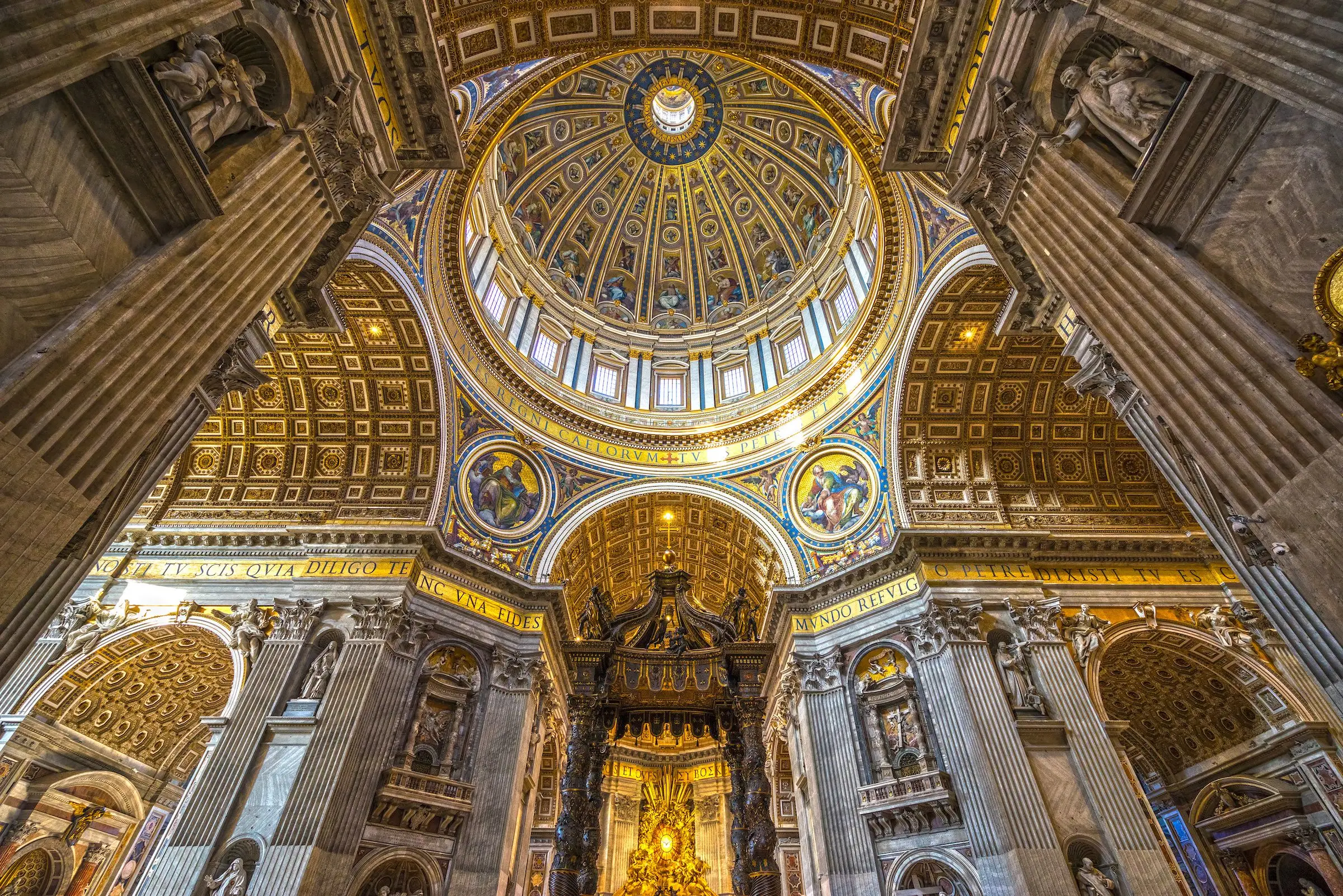
St Peter’s Basilica
 Highlight of Vatican City
Highlight of Vatican CityExplore the gigantic and incredibly beautiful church known as "the greatest of all churches of Christendom".
The basilica is one of the chief pilgrimage sites in the Christian world, and one of the most popular tourist destinations in Rome. The basilica is the symbolic center of the church not only because the Pope frequently celebrates Mass there, but because it is believed that the apostle St. Peter is buried beneath it. Catholics consider Peter as the first Bishop of Rome and "the rock" upon which the Catholic Church was built, in accordance with Christ's instructions. Inside you can admire sculptures by Bernini as well as Michelangelo's famous sculpture of the Virgin Mary holding the crucified Jesus, known as The Pietà. The church's elaborate and impressive golden interior is a sight to behold. Other sights include St Peter's tomb, the Papal crypts in the necropolis under the basilica, as well as the dome, which rewards visitors with views over Rome. Entry is free, but queues to visit the Basilica can be lengthy, so it is highly advised to either get there early or to purchase a skip the line entrance. The dome is also paid entry.

Vatican Gardens
 Highlight of Vatican City
Highlight of Vatican CityEscape the crowds in this oasis of green hidden behind the walls of the Vatican.
Accessible only via a guided tour, the gardens are definitely worth a visit. Just as the Popes have for hundreds of years, you can stroll the gardens and relax amidst the greenery, while taking in the perfect view of St. Peter's.
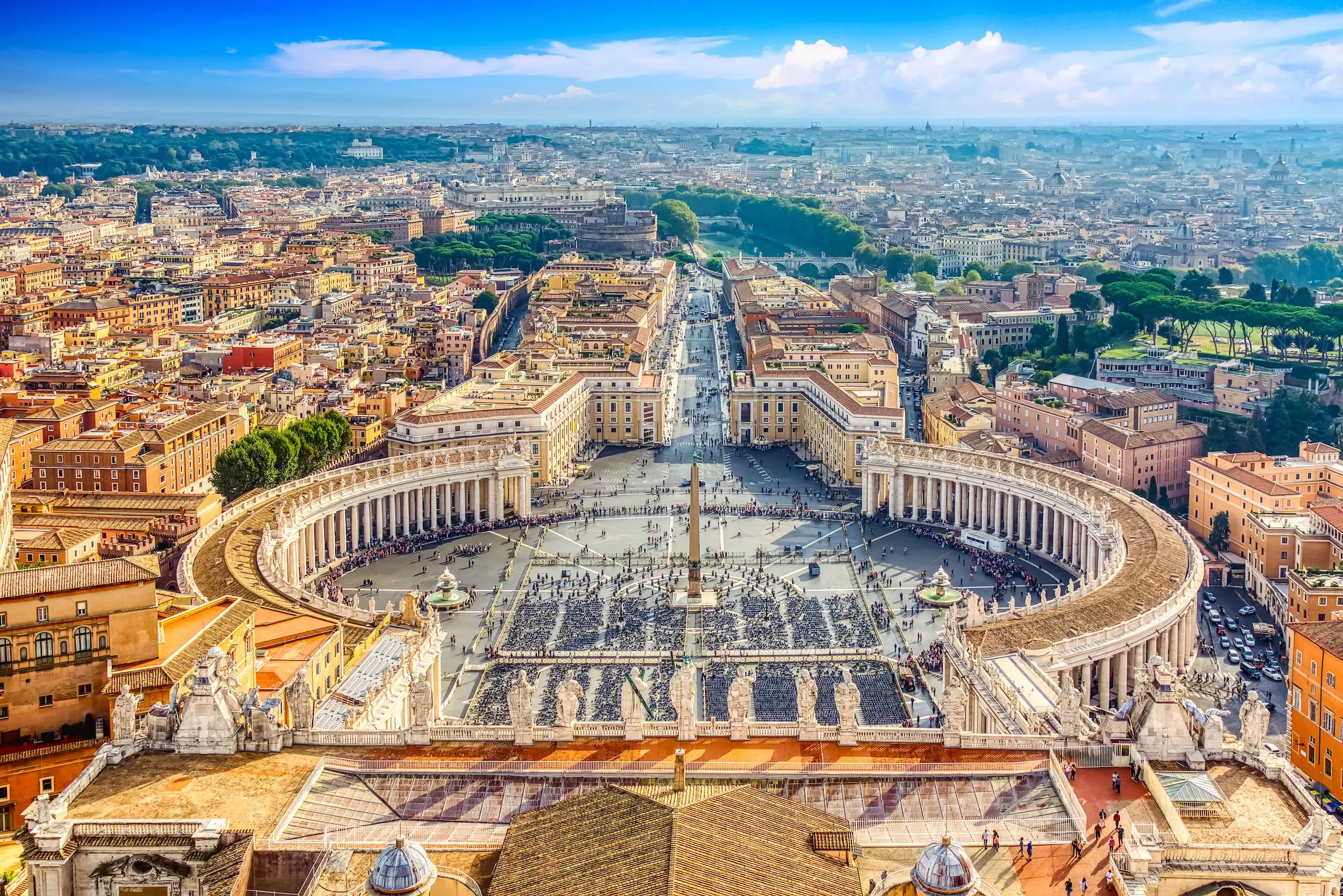
St Peter's Square
 Highlight of Vatican City
Highlight of Vatican CityStand in the middle of this famous square in which the faithful gather to hear the Pope give audiences and celebrate mass.
As one of the most superb conceptions of its kind in civic architecture, St Peter’s Square is the masterpiece of Gian Lorenzo Bernini and makes a wonderful approach to one of the world’s most magnificent churches, St Peter's Basilica. An oval rather than an actual square, the piazza, laid out in 1656-67, is partially enclosed by two semi-circular colonnades on which stand 96 statues of saints and martyrs. At the center of the oval stands an 84-foot (26m) tall Egyptian obelisk of red granite.

Sistine Chapel
 Highlight of Vatican City
Highlight of Vatican CityGaze up at the world's most famous ceiling, the masterpiece of Michelangelo.
This famous chapel inside the Vatican Museums is best known for Michelangelo's 16th-century painted ceiling of "The Creation of Adam" and "The Last Judgement" fresco that covers the whole altar wall of the chapel. The jaw-dropping sight is not to be missed, considered one of the top highlights of visiting the Vatican Museums and one of the top artistic wonders of the world.

Vatican Museums
 Highlight of Vatican City
Highlight of Vatican CityBook early if you want to see the Vatican Museum's monumental works of art from the greatest Italian artists of the Renaissance.
The Vatican Museum is actually 26 different museums, which include not only exhibitions but chapels, apartments, and other rooms of the Vatican palace, covering a huge range of fine and applied arts patronized by the popes. There's also an outstanding collection of ancient antiquities (including even the Emperor Nero's red stone bathtub), a gallery of hand-painted maps, and whole rooms turned into works of art. In addition to ancient and medieval works of art, you'll see masterpieces by the "who's who" of the Italian Renaissance, including Raphael, Leonardo da Vinci, Titian, and Caravaggio. Other highlights include panels by the brilliant monk-artist Fra Angelico, works from the Venetian school, including Vavarini, and much, much more. Booking in advance is highly recommended as otherwise you can wait for hours or not even be able to get in at all.

St Peter’s Basilica
 Highlight of Vatican City
Highlight of Vatican CityExplore the gigantic and incredibly beautiful church known as "the greatest of all churches of Christendom".
The basilica is one of the chief pilgrimage sites in the Christian world, and one of the most popular tourist destinations in Rome. The basilica is the symbolic center of the church not only because the Pope frequently celebrates Mass there, but because it is believed that the apostle St. Peter is buried beneath it. Catholics consider Peter as the first Bishop of Rome and "the rock" upon which the Catholic Church was built, in accordance with Christ's instructions. Inside you can admire sculptures by Bernini as well as Michelangelo's famous sculpture of the Virgin Mary holding the crucified Jesus, known as The Pietà. The church's elaborate and impressive golden interior is a sight to behold. Other sights include St Peter's tomb, the Papal crypts in the necropolis under the basilica, as well as the dome, which rewards visitors with views over Rome. Entry is free, but queues to visit the Basilica can be lengthy, so it is highly advised to either get there early or to purchase a skip the line entrance. The dome is also paid entry.

Vatican Gardens
 Highlight of Vatican City
Highlight of Vatican CityEscape the crowds in this oasis of green hidden behind the walls of the Vatican.
Accessible only via a guided tour, the gardens are definitely worth a visit. Just as the Popes have for hundreds of years, you can stroll the gardens and relax amidst the greenery, while taking in the perfect view of St. Peter's.

St Peter's Square
 Highlight of Vatican City
Highlight of Vatican CityStand in the middle of this famous square in which the faithful gather to hear the Pope give audiences and celebrate mass.
As one of the most superb conceptions of its kind in civic architecture, St Peter’s Square is the masterpiece of Gian Lorenzo Bernini and makes a wonderful approach to one of the world’s most magnificent churches, St Peter's Basilica. An oval rather than an actual square, the piazza, laid out in 1656-67, is partially enclosed by two semi-circular colonnades on which stand 96 statues of saints and martyrs. At the center of the oval stands an 84-foot (26m) tall Egyptian obelisk of red granite.

Sistine Chapel
 Highlight of Vatican City
Highlight of Vatican CityGaze up at the world's most famous ceiling, the masterpiece of Michelangelo.
This famous chapel inside the Vatican Museums is best known for Michelangelo's 16th-century painted ceiling of "The Creation of Adam" and "The Last Judgement" fresco that covers the whole altar wall of the chapel. The jaw-dropping sight is not to be missed, considered one of the top highlights of visiting the Vatican Museums and one of the top artistic wonders of the world.

Vatican Museums
 Highlight of Vatican City
Highlight of Vatican CityBook early if you want to see the Vatican Museum's monumental works of art from the greatest Italian artists of the Renaissance.
The Vatican Museum is actually 26 different museums, which include not only exhibitions but chapels, apartments, and other rooms of the Vatican palace, covering a huge range of fine and applied arts patronized by the popes. There's also an outstanding collection of ancient antiquities (including even the Emperor Nero's red stone bathtub), a gallery of hand-painted maps, and whole rooms turned into works of art. In addition to ancient and medieval works of art, you'll see masterpieces by the "who's who" of the Italian Renaissance, including Raphael, Leonardo da Vinci, Titian, and Caravaggio. Other highlights include panels by the brilliant monk-artist Fra Angelico, works from the Venetian school, including Vavarini, and much, much more. Booking in advance is highly recommended as otherwise you can wait for hours or not even be able to get in at all.
prev
next


Day 4
Rome to Florence
Day 4
Rome to Florence





Morning/Mid-Day
South of Center
While most tourists stick to the Vatican and historic center of Rome, just south of the Palatine Hill lay several attractions that are definitely worth seeing. Start with a quick visit to the Circus Maximus, where chariot races were held in ancient Rome, and then make your way further south for a look at the fascinating pyramid tomb of Caius Cestius, one of classical Rome's best preserved ruins. It was built for a Roman aristocrat during a time when all things Egyptian were the rage. Just next to pyramid is the Protestant Cemetery, holding the earthly remains of Rome's non-Catholic residents, locals and foreigners alike, and not just Protestants. Within this beautiful cemetery, you will find the graves of the poets Keats and Shelley and Gregory Corso, as well as the Italian Marxist philosopher Antonio Gramsci. Farther up the road are the huge Baths of Caracalla - named after one of classical Rome's cruelest emperors.

Protestant Cemetery
Visit the lovely final resting place of many famous non-Catholics who died in Rome.
Show More

Basilica of Saint Paul Outside the Walls
Venture even further south to discover this magnificent and usually missed basilica which holds the tomb of St. Paul and dates back to 324 AD.
Show More

Circus Maximus
Watch the locals go for a jog or walk their dogs through what was once the most illustrious sporting venue in the ancient world, where frenzied crowds cheered on their favored team of charioteers in dramatic and sometimes deadly races.
Show More

Baths of Caracalla
Walk around one of the few lasting physical legacies of Emperor Caracalla and admire the structures and well-preserved mosaics of the baths and gyms.
Show More

Protestant Cemetery
Visit the lovely final resting place of many famous non-Catholics who died in Rome.
Show More

Basilica of Saint Paul Outside the Walls
Venture even further south to discover this magnificent and usually missed basilica which holds the tomb of St. Paul and dates back to 324 AD.
Show More

Circus Maximus
Watch the locals go for a jog or walk their dogs through what was once the most illustrious sporting venue in the ancient world, where frenzied crowds cheered on their favored team of charioteers in dramatic and sometimes deadly races.
Show More

Baths of Caracalla
Walk around one of the few lasting physical legacies of Emperor Caracalla and admire the structures and well-preserved mosaics of the baths and gyms.
Show More
prev
next

Day 4
Rome to Florence


Protestant Cemetery
 Highlight of South of Center
Highlight of South of CenterVisit the lovely final resting place of many famous non-Catholics who died in Rome.
It may not look it from outside the cemetery walls, but it's actually a very romantic setting with tall cypresses and pine trees, and it's beautifully maintained and inhabited by numerous cats. The cemetery was created due to the fact that non-Catholics were not allowed to be buried in Rome's Catholic cemeteries. Since the earliest recorded grave dating from 1738, some 4,000 people have been buried here. The cemetery famously contains the mortal remains of the English romantic poets Johns Keats and Percy Shelley. Other famous tombs in the cemetery include those of the Italian Marxist philosopher Antonio Gramsci, the son of Goethe, and the American Beat poet Gregory Corso, who was buried here in 2001 at his request next to Shelley.

Basilica of Saint Paul Outside the Walls
 Highlight of South of Center
Highlight of South of CenterVenture even further south to discover this magnificent and usually missed basilica which holds the tomb of St. Paul and dates back to 324 AD.
Founded by the Emperor Constantine over the tomb of St. Paul, the church is one of Rome's four major papal basilicas. Well off the beaten path, those who do visit it are often surprised to have never heard of such a beautiful and impressive church. Decorated with mosaic tile, the interior is breathtaking. Visitors can also find portraits of every pope from St. Peter to Pope Francis.
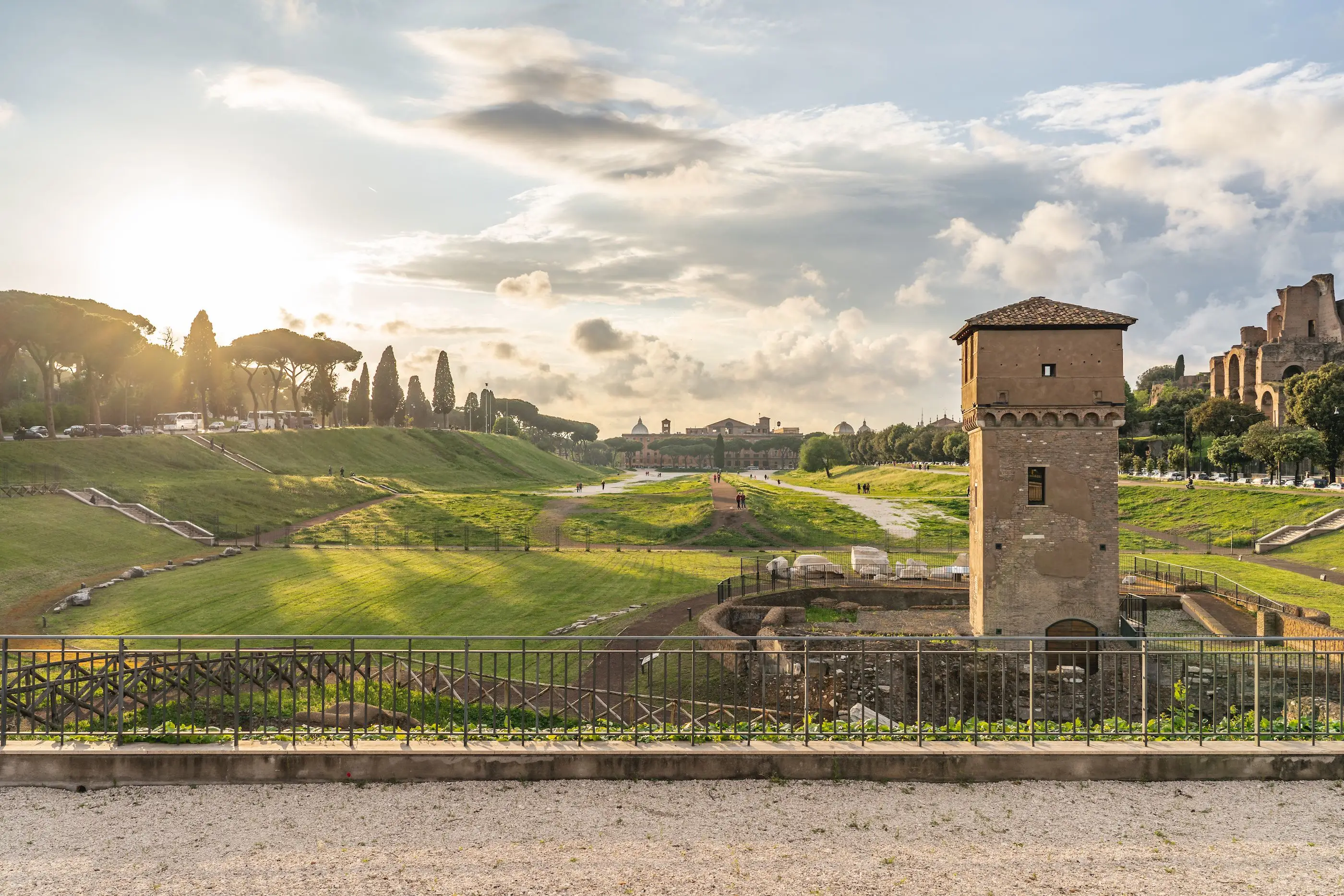
Circus Maximus
 Highlight of South of Center
Highlight of South of CenterWatch the locals go for a jog or walk their dogs through what was once the most illustrious sporting venue in the ancient world, where frenzied crowds cheered on their favored team of charioteers in dramatic and sometimes deadly races.
The Circus Maximus lies in the valley between the Palatine and Aventine hills and is the largest uninterrupted open space in the city. It was the first and largest chariot racing circus in Rome, with the first factual reference to it dating from 328 BC. In the days of ancient Rome, the circus was the scene of great entertainment and chariot races and games were held here. Not much remains of it today, but the form of it can still be imagined.

Baths of Caracalla
 Highlight of South of Center
Highlight of South of CenterWalk around one of the few lasting physical legacies of Emperor Caracalla and admire the structures and well-preserved mosaics of the baths and gyms.
The huge baths are now the best-preserved and most splendid Imperial-era baths in Rome. Built between the years 212 and 216, the baths are one of the most impressive thermae that remains, a site that in its heyday could accommodate 1,600 bathers at a time. As you walk around the imposing walls of the bathhouse you can easily imagine what it would have been like in its glory and splendour. The mosaics on the ground floor are very well preserved and in some places you can even see remnants of games that were carved into the marble of the pool.

Protestant Cemetery
 Highlight of South of Center
Highlight of South of CenterVisit the lovely final resting place of many famous non-Catholics who died in Rome.
It may not look it from outside the cemetery walls, but it's actually a very romantic setting with tall cypresses and pine trees, and it's beautifully maintained and inhabited by numerous cats. The cemetery was created due to the fact that non-Catholics were not allowed to be buried in Rome's Catholic cemeteries. Since the earliest recorded grave dating from 1738, some 4,000 people have been buried here. The cemetery famously contains the mortal remains of the English romantic poets Johns Keats and Percy Shelley. Other famous tombs in the cemetery include those of the Italian Marxist philosopher Antonio Gramsci, the son of Goethe, and the American Beat poet Gregory Corso, who was buried here in 2001 at his request next to Shelley.

Basilica of Saint Paul Outside the Walls
 Highlight of South of Center
Highlight of South of CenterVenture even further south to discover this magnificent and usually missed basilica which holds the tomb of St. Paul and dates back to 324 AD.
Founded by the Emperor Constantine over the tomb of St. Paul, the church is one of Rome's four major papal basilicas. Well off the beaten path, those who do visit it are often surprised to have never heard of such a beautiful and impressive church. Decorated with mosaic tile, the interior is breathtaking. Visitors can also find portraits of every pope from St. Peter to Pope Francis.

Circus Maximus
 Highlight of South of Center
Highlight of South of CenterWatch the locals go for a jog or walk their dogs through what was once the most illustrious sporting venue in the ancient world, where frenzied crowds cheered on their favored team of charioteers in dramatic and sometimes deadly races.
The Circus Maximus lies in the valley between the Palatine and Aventine hills and is the largest uninterrupted open space in the city. It was the first and largest chariot racing circus in Rome, with the first factual reference to it dating from 328 BC. In the days of ancient Rome, the circus was the scene of great entertainment and chariot races and games were held here. Not much remains of it today, but the form of it can still be imagined.

Baths of Caracalla
 Highlight of South of Center
Highlight of South of CenterWalk around one of the few lasting physical legacies of Emperor Caracalla and admire the structures and well-preserved mosaics of the baths and gyms.
The huge baths are now the best-preserved and most splendid Imperial-era baths in Rome. Built between the years 212 and 216, the baths are one of the most impressive thermae that remains, a site that in its heyday could accommodate 1,600 bathers at a time. As you walk around the imposing walls of the bathhouse you can easily imagine what it would have been like in its glory and splendour. The mosaics on the ground floor are very well preserved and in some places you can even see remnants of games that were carved into the marble of the pool.
prev
next


Day 5
Florence
Day 5
Florence




9:00 AM - 12:00 PM
Private Guided Walk in Florence
Enjoy a 3-hour private walking tour of Florence, the perfect introduction to the masterpieces of this city. Stroll around the historic center and take in sights such as the Palazzo Vecchio, Ponte Vecchio, Piazza Della Signora and end your tour at the famous Galleria dell'Accademia where you can enter to see Michelangelo's marble masterpiece, the statue of David.

Galleria dell'Accademia
Art museum and home to Michelangelo's famous David
Show More

Galleria dell'Accademia
Art museum and home to Michelangelo's famous David
Show More

Galleria dell'Accademia
Art museum and home to Michelangelo's famous David
Show More

Galleria dell'Accademia
Art museum and home to Michelangelo's famous David
Show More

Galleria dell'Accademia
Art museum and home to Michelangelo's famous David
Show More
prev
next

Day 5
Florence

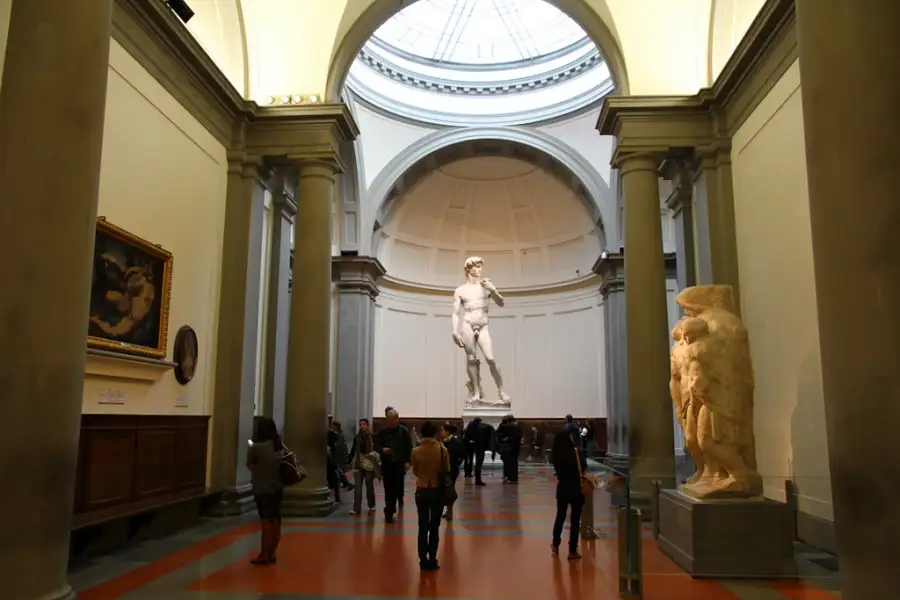
Galleria dell'Accademia
 Highlight of Private Guided Walk in Florence
Highlight of Private Guided Walk in FlorenceArt museum and home to Michelangelo's famous David
The Gallery's prized exhibits are naturally its works by Michelangelo, including in addition to David his unfinished Slaves (or Prisoners).

Galleria dell'Accademia
 Highlight of Private Guided Walk in Florence
Highlight of Private Guided Walk in FlorenceArt museum and home to Michelangelo's famous David
The Gallery's prized exhibits are naturally its works by Michelangelo, including in addition to David his unfinished Slaves (or Prisoners).

Galleria dell'Accademia
 Highlight of Private Guided Walk in Florence
Highlight of Private Guided Walk in FlorenceArt museum and home to Michelangelo's famous David
The Gallery's prized exhibits are naturally its works by Michelangelo, including in addition to David his unfinished Slaves (or Prisoners).

Galleria dell'Accademia
 Highlight of Private Guided Walk in Florence
Highlight of Private Guided Walk in FlorenceArt museum and home to Michelangelo's famous David
The Gallery's prized exhibits are naturally its works by Michelangelo, including in addition to David his unfinished Slaves (or Prisoners).

Galleria dell'Accademia
 Highlight of Private Guided Walk in Florence
Highlight of Private Guided Walk in FlorenceArt museum and home to Michelangelo's famous David
The Gallery's prized exhibits are naturally its works by Michelangelo, including in addition to David his unfinished Slaves (or Prisoners).
prev
next

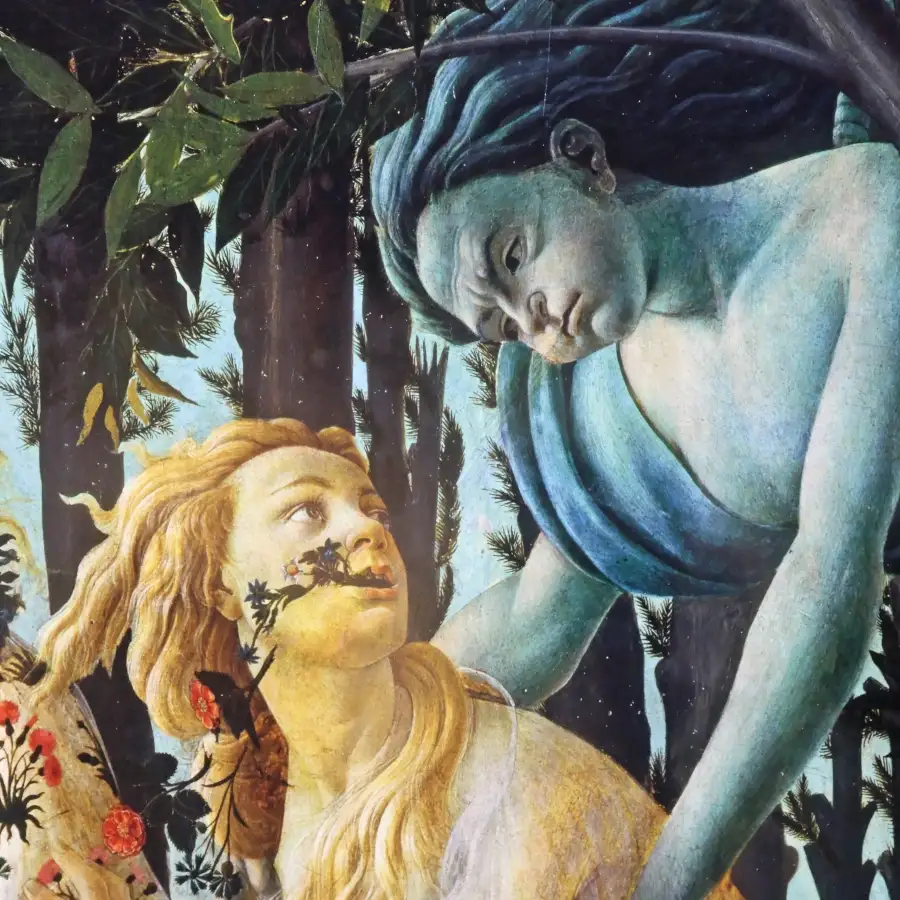
Day 6
Florence to Paris
Day 6
Florence to Paris





Early Morning/Morning
Uffizi Gallery
As the capital of the Renaissance, it's only fitting that Florence should also host Italy's greatest art gallery at the Uffizi. It's understandably busy throughout the year, but it's nevertheless worth the crowds to see to see some of the most sumptuous masterpieces of Renaissance art, including Botticelli's Primavera and Venus, and works by Michelangelo and Da Vinci. If you're planning to visit other galleries and museums in Florence, then it's definitely worth investing in a Firenze Card, which gives you free entry and priority access to 72 venues in the city. At a minimum, you should book ahead for the Uffizi to avoid very long queues.

Day 6
Florence to Paris



Day 7
Paris
Day 7
Paris



9:00 AM - 1:00 PM
Paris Highlights Walking Tour
Embark on a captivating 4-hour walking tour of the center of Paris, the City of Lights, where history and modernity blend seamlessly along its enchanting streets. Starting from your accommodation, you will explore the heart of this dynamic city and learn how to navigate Paris as a local.

Day 7
Paris



Day 8
Paris
Day 8
Paris



Morning/Mid-Day
Louvre Museum
It might be the greatest art museum in the world; it certainly is the largest with over 380,000 objects; to view every single one for even a minute apiece would take 75 days. And those descriptions still don't do the building and its collection justice. Marvel at treasures inside, including Leonardo Da Vinci's mysterious woman, the Mona Lisa, and everything from an Egyptian masterpiece of mummification to the famed Hellenistic sculpture, Venus de Milo, to patriotic French masterpieces like Delacroix’s Liberty Leading the People. Although the Louvre is vast and ever-crowded, with some strategy and a few helpful tips your visit will take in maximum artworks with minimal hassle.

Day 8
Paris


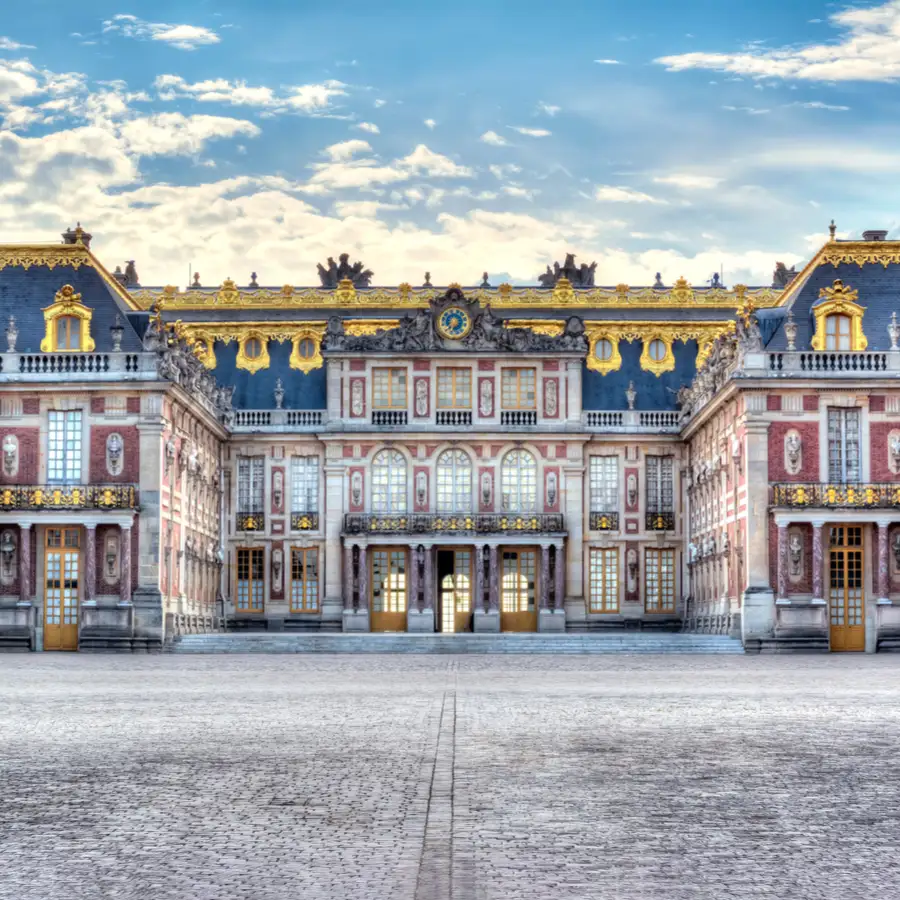
Day 9
Paris
Day 9
Paris


Morning/Mid-Day
Palace of Versailles
The Château of Versailles, a symbol of the grandeur of French monarchy, invites visitors to explore its lavish history and architectural majesty. From the spellbinding elegance of the Hall of Mirrors, where the Treaty of Versailles was signed, to the vast, meticulously manicured Gardens the pinnacle of French garden design, every corner tells a story of opulence and power. Discover the intimate escapes of royalty at the Grand and Petit Trianon, and marvel at the divine beauty of the Royal Chapel, a masterpiece of Baroque architecture.

The Queen's Hamlet
Imagine living like the "peasants" here?
Show More

Parc de Versailles
Feel like a king, feel like a queen, hopefully you'll feel good looking out across the park
Show More

Main Palace of Versailles
There are palaces, and then there is Versailles...
Show More

The Queen's Hamlet
Imagine living like the "peasants" here?
Show More

Parc de Versailles
Feel like a king, feel like a queen, hopefully you'll feel good looking out across the park
Show More

Main Palace of Versailles
There are palaces, and then there is Versailles...
Show More

The Queen's Hamlet
Imagine living like the "peasants" here?
Show More
prev
next

Day 9
Paris

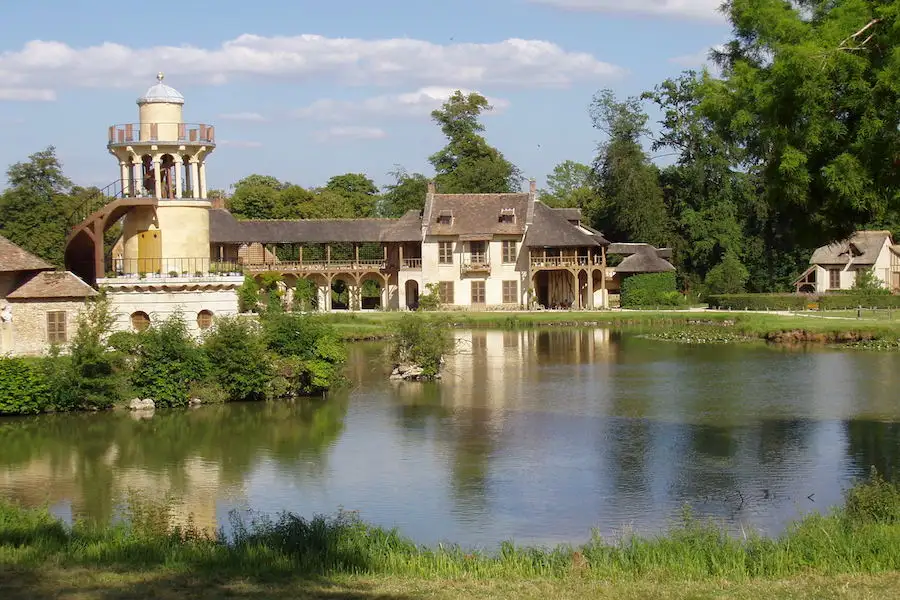
The Queen's Hamlet
 Highlight of Palace of Versailles
Highlight of Palace of VersaillesImagine living like the "peasants" here?
Desiring something different, Queen Marie Antoinette had a hamlet erected where she could supervise servants milking cows, tending pigs, collecting eggs from chickens. She dressed down to play her part, but apparently never got her hands dirty, as far as we know. Her peasant cottage only had two living rooms, a billiard room, a dining hall, and a library. If you are accustomed to palaces, only two living rooms is roughing it. Lest the queen got tired of it all, she could return to the Petit Trianon, a beautiful chateau built on the grounds of the Grand Trianon, which was the retreat chateau built on the grounds of the Palace of Versailles, which was a retreat from the Louvre Palace in Paris.
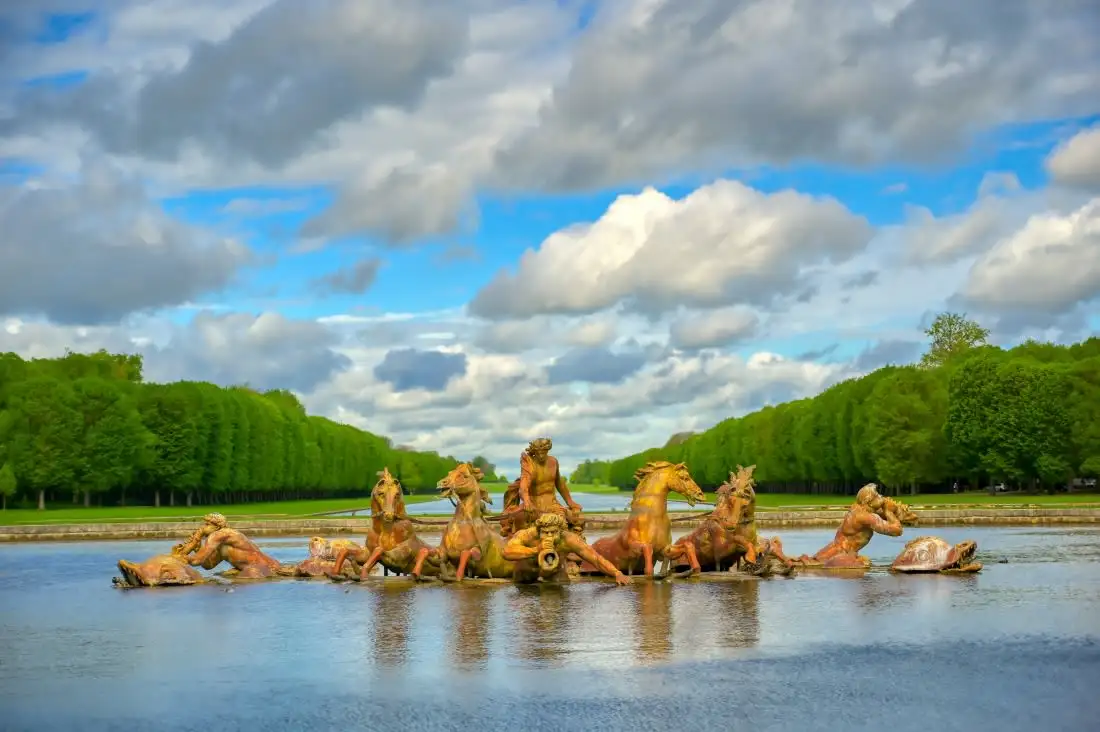
Parc de Versailles
 Highlight of Palace of Versailles
Highlight of Palace of VersaillesFeel like a king, feel like a queen, hopefully you'll feel good looking out across the park
The Parc de Versailles, features some 800 hectares of manicured lawns, stunning fountains, and the Grand Canal, all masterminded by André Le Nôtre. Highlights include the Neptune and Apollo Fountains, the Trianon Palaces, and the Queen's Hamlet. This vast garden symbolizes royal power, but you are welcomed to enjoy yourself on these pleasure grounds.
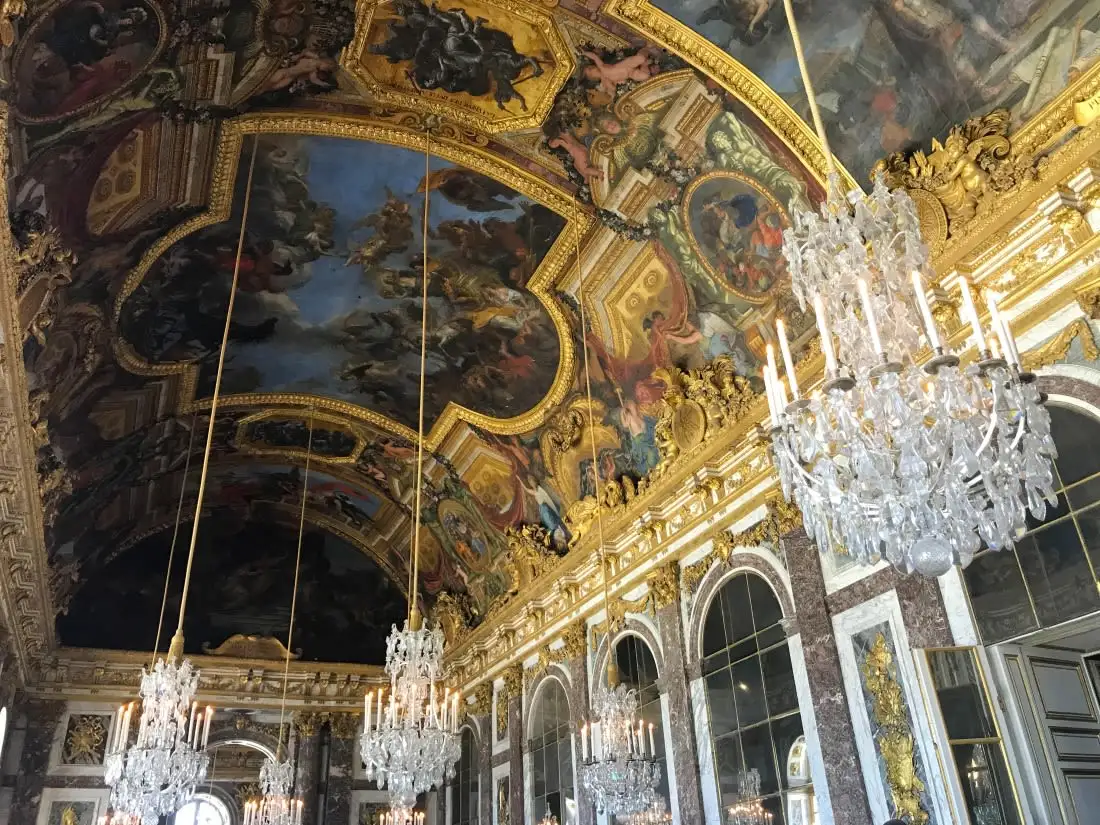
Main Palace of Versailles
 Highlight of Palace of Versailles
Highlight of Palace of VersaillesThere are palaces, and then there is Versailles...
Enlarged by for Emperor Louis XIV as an escape from the dreary political tension of Paris, Versailles might have been the most luxurious palace in the world. Even now, the building stuptifies with its grandeur and elegance, a stunning representation of the French monarchy's opulence. The famous Hall of Mirrors is just one of many, many (2300!) stunning rooms, only a small percentage of which are open for display. It might be too much, or one visit might never be enough.

The Queen's Hamlet
 Highlight of Palace of Versailles
Highlight of Palace of VersaillesImagine living like the "peasants" here?
Desiring something different, Queen Marie Antoinette had a hamlet erected where she could supervise servants milking cows, tending pigs, collecting eggs from chickens. She dressed down to play her part, but apparently never got her hands dirty, as far as we know. Her peasant cottage only had two living rooms, a billiard room, a dining hall, and a library. If you are accustomed to palaces, only two living rooms is roughing it. Lest the queen got tired of it all, she could return to the Petit Trianon, a beautiful chateau built on the grounds of the Grand Trianon, which was the retreat chateau built on the grounds of the Palace of Versailles, which was a retreat from the Louvre Palace in Paris.

Parc de Versailles
 Highlight of Palace of Versailles
Highlight of Palace of VersaillesFeel like a king, feel like a queen, hopefully you'll feel good looking out across the park
The Parc de Versailles, features some 800 hectares of manicured lawns, stunning fountains, and the Grand Canal, all masterminded by André Le Nôtre. Highlights include the Neptune and Apollo Fountains, the Trianon Palaces, and the Queen's Hamlet. This vast garden symbolizes royal power, but you are welcomed to enjoy yourself on these pleasure grounds.

Main Palace of Versailles
 Highlight of Palace of Versailles
Highlight of Palace of VersaillesThere are palaces, and then there is Versailles...
Enlarged by for Emperor Louis XIV as an escape from the dreary political tension of Paris, Versailles might have been the most luxurious palace in the world. Even now, the building stuptifies with its grandeur and elegance, a stunning representation of the French monarchy's opulence. The famous Hall of Mirrors is just one of many, many (2300!) stunning rooms, only a small percentage of which are open for display. It might be too much, or one visit might never be enough.

The Queen's Hamlet
 Highlight of Palace of Versailles
Highlight of Palace of VersaillesImagine living like the "peasants" here?
Desiring something different, Queen Marie Antoinette had a hamlet erected where she could supervise servants milking cows, tending pigs, collecting eggs from chickens. She dressed down to play her part, but apparently never got her hands dirty, as far as we know. Her peasant cottage only had two living rooms, a billiard room, a dining hall, and a library. If you are accustomed to palaces, only two living rooms is roughing it. Lest the queen got tired of it all, she could return to the Petit Trianon, a beautiful chateau built on the grounds of the Grand Trianon, which was the retreat chateau built on the grounds of the Palace of Versailles, which was a retreat from the Louvre Palace in Paris.
prev
next


Day 10
Depart Paris
Day 10
Depart Paris

To Be Determined
Airport Dropoff by Taxi
Paris taxis are generally reliable and honest, so taking a taxi is cheaper than a pre-arranged transfer. Your hotel will be happy to arrange a pick up for you. If you are picked up about 3.5 hours before your departure time, you should arrive at the airport with a little over two hours to spare. If you are leaving during rush hour, you may want to budget an extra fifteen minutes or so. There are also alternative transport instructions for buses and trains in the Full Itinerary if wish you save on the taxi fare. line-holder NOTE : If you're leaving from Beauvais Airport you should definitely take a shuttle bus because it's 75km/46.6mi from the city center.

Day 10
Depart Paris


What's Included In Europe's Iconic Destinations Trip

Pre-Paid Tours and Activities:
- Grand Guided Walking Tour of the Historic Center
- Twilight Trastevere Group Food Tour
- Best of Florence: Half-Day Walking Tour
- Private Guided Walking Tour of the Center of Paris
- City Card for Rome, including discounts to many popular attractions

Pre-Paid Transportation:
- 2nd Class Train Tickets from Rome-Florence
- Public Transport Tickets for Rome
- Private Transfer from Rome Fiumicino to Hotel
- Private Transfer to Rome Termini Train Station
- Private Transfer from Hotel to Florence Airport

Accommodation:
- 3 nights at a hotel of your choice in Rome
- 2 nights at a hotel of your choice in Florence
- 4 nights at a hotel of your choice in Paris

Go Real Travel Mobile App:
- Itinerary Plan & Reservations Info
- Points of Interest
- Detailed Travel Information
- Maps & Directions
Other Trips You May Like

10 Days
From$4033USD

8 Days
From$2424USD

13 Days
From$3699USD

12 Days
From$3129USD

7 Days
From$1899USD

10 Days
From$2199USD

7 Days
From$2139USD

14 Days
From$3559USD

10 Days
From$2980USD

10 Days
From$4033USD

8 Days
From$2424USD

13 Days
From$3699USD

12 Days
From$3129USD

7 Days
From$1899USD

10 Days
From$2199USD

7 Days
From$2139USD

14 Days
From$3559USD

10 Days
From$2980USD
prev
next
Featured Blogs
prev
next
Our Customers Say It Best
Marianne Strydom, Paarl, South Africa
I just wanted to thank you for organizing an amazing trip for me – I packed in so much in such a short period of time and everything was just perfect. The way you do things makes it possible to really get to know the destination, which for me as a travel agent could not have been better. 

Otto Chuy, Los Angeles, California
I am still surprised how everything worked as planned, without a hitch. All instructions in your itinerary were precise and correct. Your suggestions and comments in each of the locations we went to were very helpful. All your guides, without exception, were wonderful and exactly on time. 

Malini Dutta, Boston, Massachusetts
We can't thank you enough for the detailed plans, maps, and suggestions. It really felt that someone was holding our hands and showing us around. We had all the excitement of discovering foreign lands, with none of the problems that can happen while negotiating unfamiliar places. In fact, all the cities felt like home within a few hours of arriving and exploring. 

Bev and Mark Frankel, Williamsburg, Virginia
We could not be more pleased with Go Real Travel! You took the guess work out of things like public transport but still managed to allow us the freedom to tour as we wanted. Our guides were exceptional and every time I saw a Viking Cruise tour of 25 people, I realized the quality experience we were getting with Go Real. 

Marianne Strydom, Paarl, South Africa
I just wanted to thank you for organizing an amazing trip for me – I packed in so much in such a short period of time and everything was just perfect. The way you do things makes it possible to really get to know the destination, which for me as a travel agent could not have been better. 

Otto Chuy, Los Angeles, California
I am still surprised how everything worked as planned, without a hitch. All instructions in your itinerary were precise and correct. Your suggestions and comments in each of the locations we went to were very helpful. All your guides, without exception, were wonderful and exactly on time. 

Malini Dutta, Boston, Massachusetts
We can't thank you enough for the detailed plans, maps, and suggestions. It really felt that someone was holding our hands and showing us around. We had all the excitement of discovering foreign lands, with none of the problems that can happen while negotiating unfamiliar places. In fact, all the cities felt like home within a few hours of arriving and exploring. 

Bev and Mark Frankel, Williamsburg, Virginia
We could not be more pleased with Go Real Travel! You took the guess work out of things like public transport but still managed to allow us the freedom to tour as we wanted. Our guides were exceptional and every time I saw a Viking Cruise tour of 25 people, I realized the quality experience we were getting with Go Real. 



Explore cities in more detail
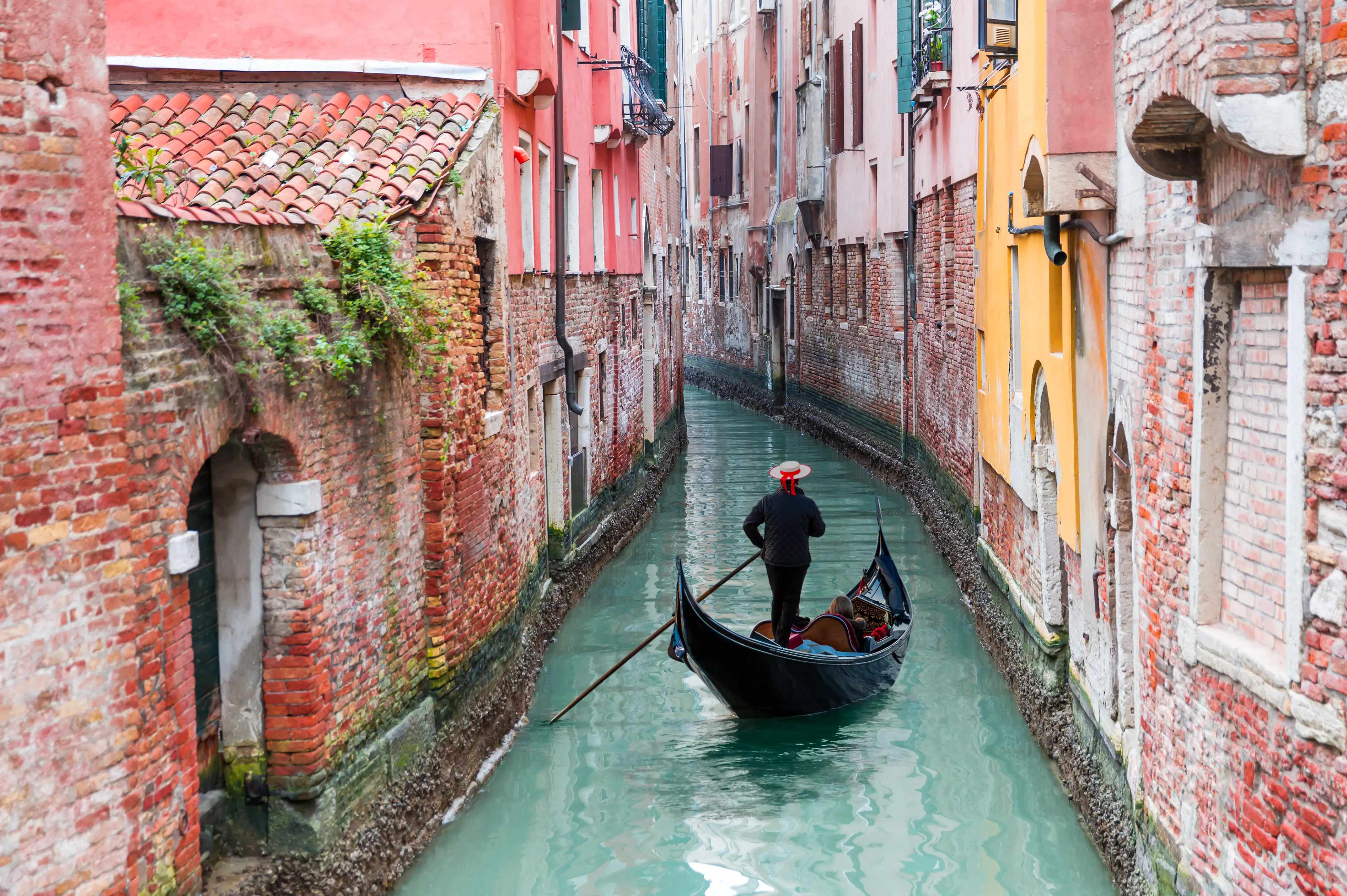
Venice
Venice is a city with no equal. Built on a series of islands on a lagoon, it was once a powerful city-state. Echoes of that old magnificence can be seen everywhere here, from the stunning buildings that rise out of the canals, to the bridges that arc across them. Take a Gondola ride through the canals that form the city’s veins, or wander through the winding streets drinking in the sights. You’ll see Venice attracts tourists in huge numbers, and that’s with good reason. It’s home to a seemingly limitless amount of art, culture, history, and architecture. St Mark’s Basilica, the Doge’s Palace, and the Campanile di San Marco just barely scratch the surface. There’s a 700-year-old market, Rialto, which is still open today. The Ponte di Rialto bridge connects the neighborhoods of San Marco and San Polo, stretching across the Grand Canal. Venice has weathered the last several centuries with elegance and pride, a place that will surpass even your highest expectations.

Learn About Venice
Build Venice Trip

Milan
Milan is Italy’s most forward-looking city. An international center for fashion, fine dining, and design, it seems as though Milanese people breathe style. From the gleam on your wine glass to the twists of its cathedral’s spires, everything in Milan is finished to perfection. Home to the Italian stock exchange, a world-famous fashion industry, and a frantic business district, Milan is fast-paced and commercially minded. The shopping in Milan is second to none. At the Galleria Vittorio Emanuele II, one of the world’s oldest shopping malls, a glass-iron ceiling soars over brands like Louis Vuitton, Gucci, Massimo Dutti, and Amani. Along with the fashion, Milan’s cathedral, castle, and canals are also must-sees. But to view the city’s most prized possession - Leonardo da Vinci’s Last Supper, you must make an appointment. Tickets to view this mural sell out weeks in advance. It is truly a bucket-list worthy work of art. After a day taking in all the glamor and culture, take a seat in one of Milan’s well-appointed eateries. The Navigli Quarter is packed with restaurants, bars, and cafes, perfect for a relaxed Aperol spritz or pizza along the city’s canals.

Learn About Milan
Build Milan Trip
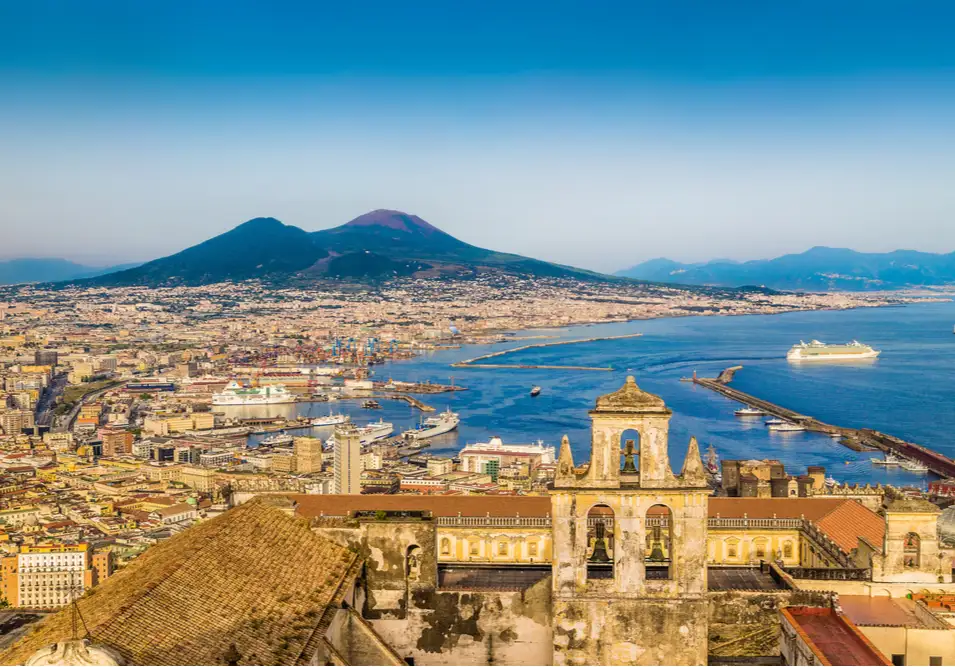
Naples
Gritty and chaotic Naples calls to travelers who want to experience the real Italy. Pressed along the coast of Campania, hilly Naples is jammed with maze-like streets, strung with outdoor clotheslines, descending toward the sea below. A much deserved UNESCO World Heritage site, Naples is famous for its churches, museums, castles, and catacombs. As you navigate the city, you’ll find yourself immersed by its culture and history. You can easily occupy a full day gazing at churches like the Naples Cathedral, San Francesco di Paola, and Cappella Sansevero. If you cast your eyes toward the Gulf of Naples, you’ll see Mount Vesuvius looming over the harbor. This foreboding volcano erupted in AD 79. Not far from the inner city — less than an hour by train — you’ll find the ancient town of Pompeii, its dramatic ruins still preserved in ash from the eruption. One of the best things you can do in Naples is to eat. This is the city where pizza was born. Propped up by its ripe tomatoes, local cheeses, and fresh fish, food from Naples has come to define what many see as the height of Italian cuisine. Everything you taste in Naples seems like a delicacy. Authentic and vivid, Naples is a true Italian city where the ancient world meets the modern-day with a bang.

Learn About Naples
Build Naples Trip

Rome
One of the must-sees of Italy, and indeed all of Europe, Rome is a city with history flowing through its veins. There is an endless amount to see, do, and learn here, with something for every taste and disposition. Rome was the center of Western civilization for a Millenium and during that time, accumulated a list of historical and cultural treasures that no other destination can truly match. The Pantheon, Colosseum, Roman Forum, and Cirus of Maxentius are just a few examples of what can be seen and experienced in Rome, which at times feels more like a giant outdoor museum than a city. At Rome’s heart, you’ll find the Vatican, home of the Roman Catholic Church and the Pope. Here visitors can see the legendary Sistine Chapel. Transcending a mere building, the chapel is a walk-in work of art. Although historical sights can be found on just about every corner, it’s entirely possible to fill a day just wandering around Rome. The city’s charming streets and open Piazzas are filled with beautiful sights and places to sit, grab the best Cappuccino in the world, and enjoy the view.

Learn About Rome
Build Rome Trip

Florence
Culture and history are thick in the air in Florence. Located on the banks of the Arno River in Tuscany, Florence’s past is deeply compelling. The birthplace of the Renaissance, Florence is where innovators like Dante, Machiavelli, Michelangelo, and Da Vinci made their fortunes. Centuries of art, politics, and commerce have left their mark on every stone in this Northern Italian city. In the 15th and 16th centuries, Florentine banks funded new enterprises that went on to change the history of the world. Powerful families like the Medici’s financed some of the finest art in history and pioneered new ways of doing statecraft and politics. As you stand in the Piazzale Michelangelo and gaze upon the city below it’s hard to take it all in at once. It feels like behind every door in Florence might hide a work of genius. Michelangelo’s David and Botticelli’s Primavera can be found just a short walk away. After a long day wandering the streets and gazing at art, fueled by exquisite coffee and gelato, relax like the locals do: with a glass of some of the best wine in the world.

Learn About Florence
Build Florence Trip
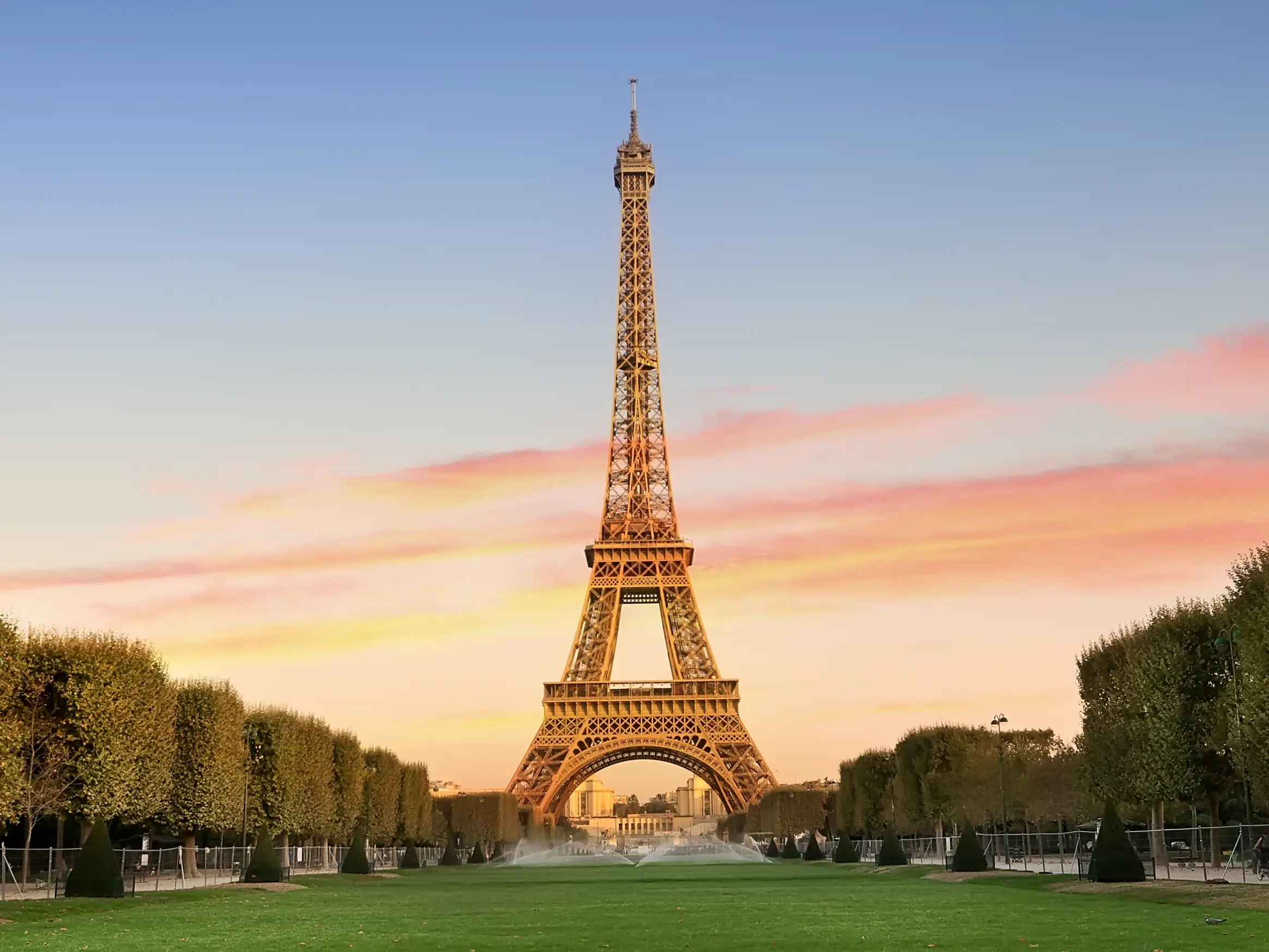
Paris
The magic of Paris is undeniable. This is the most romantic destination in Europe, and surely the number one bucket list destination of all time. If you want to say you've traveled, you have to visit Paris at least once. Along with classic must-sees like the Eiffel Tower and the Sacre-Coeur, there is so much to see and do in Paris that it helps to narrow it down by interest. Fashion and shopping enthusiast? Look no further than the Galeries Lafayette, Avenue des Champs-Élysées, or the Marais. Art aficionado? Once you're done with the Louvre, make a start on the Musée d'Orsay. History buffs won't be able to walk a block without uncovering a monument to Napoleon or Louis XIV. If you visit Paris with a foodie, be warned — you'll gaze in a lot of patisserie windows, and sample your weight in croissants. Because Paris always has so much on offer, it never grows old. At dusk, as you stroll the wide boulevards past Haussmann apartment buildings and sharply dressed Parisians, or gaze down at the city from the hill at Montmarte, you might find yourself saying 'Paris Je t' aime'. This is, after all, the City of Love.

Learn About Paris
Build Paris Trip

Venice
Venice is a city with no equal. Built on a series of islands on a lagoon, it was once a powerful city-state. Echoes of that old magnificence can be seen everywhere here, from the stunning buildings that rise out of the canals, to the bridges that arc across them. Take a Gondola ride through the canals that form the city’s veins, or wander through the winding streets drinking in the sights. You’ll see Venice attracts tourists in huge numbers, and that’s with good reason. It’s home to a seemingly limitless amount of art, culture, history, and architecture. St Mark’s Basilica, the Doge’s Palace, and the Campanile di San Marco just barely scratch the surface. There’s a 700-year-old market, Rialto, which is still open today. The Ponte di Rialto bridge connects the neighborhoods of San Marco and San Polo, stretching across the Grand Canal. Venice has weathered the last several centuries with elegance and pride, a place that will surpass even your highest expectations.

Learn About Venice
Build Venice Trip

Milan
Milan is Italy’s most forward-looking city. An international center for fashion, fine dining, and design, it seems as though Milanese people breathe style. From the gleam on your wine glass to the twists of its cathedral’s spires, everything in Milan is finished to perfection. Home to the Italian stock exchange, a world-famous fashion industry, and a frantic business district, Milan is fast-paced and commercially minded. The shopping in Milan is second to none. At the Galleria Vittorio Emanuele II, one of the world’s oldest shopping malls, a glass-iron ceiling soars over brands like Louis Vuitton, Gucci, Massimo Dutti, and Amani. Along with the fashion, Milan’s cathedral, castle, and canals are also must-sees. But to view the city’s most prized possession - Leonardo da Vinci’s Last Supper, you must make an appointment. Tickets to view this mural sell out weeks in advance. It is truly a bucket-list worthy work of art. After a day taking in all the glamor and culture, take a seat in one of Milan’s well-appointed eateries. The Navigli Quarter is packed with restaurants, bars, and cafes, perfect for a relaxed Aperol spritz or pizza along the city’s canals.

Learn About Milan
Build Milan Trip

Naples
Gritty and chaotic Naples calls to travelers who want to experience the real Italy. Pressed along the coast of Campania, hilly Naples is jammed with maze-like streets, strung with outdoor clotheslines, descending toward the sea below. A much deserved UNESCO World Heritage site, Naples is famous for its churches, museums, castles, and catacombs. As you navigate the city, you’ll find yourself immersed by its culture and history. You can easily occupy a full day gazing at churches like the Naples Cathedral, San Francesco di Paola, and Cappella Sansevero. If you cast your eyes toward the Gulf of Naples, you’ll see Mount Vesuvius looming over the harbor. This foreboding volcano erupted in AD 79. Not far from the inner city — less than an hour by train — you’ll find the ancient town of Pompeii, its dramatic ruins still preserved in ash from the eruption. One of the best things you can do in Naples is to eat. This is the city where pizza was born. Propped up by its ripe tomatoes, local cheeses, and fresh fish, food from Naples has come to define what many see as the height of Italian cuisine. Everything you taste in Naples seems like a delicacy. Authentic and vivid, Naples is a true Italian city where the ancient world meets the modern-day with a bang.

Learn About Naples
Build Naples Trip

Rome
One of the must-sees of Italy, and indeed all of Europe, Rome is a city with history flowing through its veins. There is an endless amount to see, do, and learn here, with something for every taste and disposition. Rome was the center of Western civilization for a Millenium and during that time, accumulated a list of historical and cultural treasures that no other destination can truly match. The Pantheon, Colosseum, Roman Forum, and Cirus of Maxentius are just a few examples of what can be seen and experienced in Rome, which at times feels more like a giant outdoor museum than a city. At Rome’s heart, you’ll find the Vatican, home of the Roman Catholic Church and the Pope. Here visitors can see the legendary Sistine Chapel. Transcending a mere building, the chapel is a walk-in work of art. Although historical sights can be found on just about every corner, it’s entirely possible to fill a day just wandering around Rome. The city’s charming streets and open Piazzas are filled with beautiful sights and places to sit, grab the best Cappuccino in the world, and enjoy the view.

Learn About Rome
Build Rome Trip

Florence
Culture and history are thick in the air in Florence. Located on the banks of the Arno River in Tuscany, Florence’s past is deeply compelling. The birthplace of the Renaissance, Florence is where innovators like Dante, Machiavelli, Michelangelo, and Da Vinci made their fortunes. Centuries of art, politics, and commerce have left their mark on every stone in this Northern Italian city. In the 15th and 16th centuries, Florentine banks funded new enterprises that went on to change the history of the world. Powerful families like the Medici’s financed some of the finest art in history and pioneered new ways of doing statecraft and politics. As you stand in the Piazzale Michelangelo and gaze upon the city below it’s hard to take it all in at once. It feels like behind every door in Florence might hide a work of genius. Michelangelo’s David and Botticelli’s Primavera can be found just a short walk away. After a long day wandering the streets and gazing at art, fueled by exquisite coffee and gelato, relax like the locals do: with a glass of some of the best wine in the world.

Learn About Florence
Build Florence Trip

Paris
The magic of Paris is undeniable. This is the most romantic destination in Europe, and surely the number one bucket list destination of all time. If you want to say you've traveled, you have to visit Paris at least once. Along with classic must-sees like the Eiffel Tower and the Sacre-Coeur, there is so much to see and do in Paris that it helps to narrow it down by interest. Fashion and shopping enthusiast? Look no further than the Galeries Lafayette, Avenue des Champs-Élysées, or the Marais. Art aficionado? Once you're done with the Louvre, make a start on the Musée d'Orsay. History buffs won't be able to walk a block without uncovering a monument to Napoleon or Louis XIV. If you visit Paris with a foodie, be warned — you'll gaze in a lot of patisserie windows, and sample your weight in croissants. Because Paris always has so much on offer, it never grows old. At dusk, as you stroll the wide boulevards past Haussmann apartment buildings and sharply dressed Parisians, or gaze down at the city from the hill at Montmarte, you might find yourself saying 'Paris Je t' aime'. This is, after all, the City of Love.

Learn About Paris
Build Paris Trip
prev
next


 Map of Your Itinerary Route
Map of Your Itinerary Route
Zoom In to the cities to see your itinerary in more detail


 4.8
4.8 







